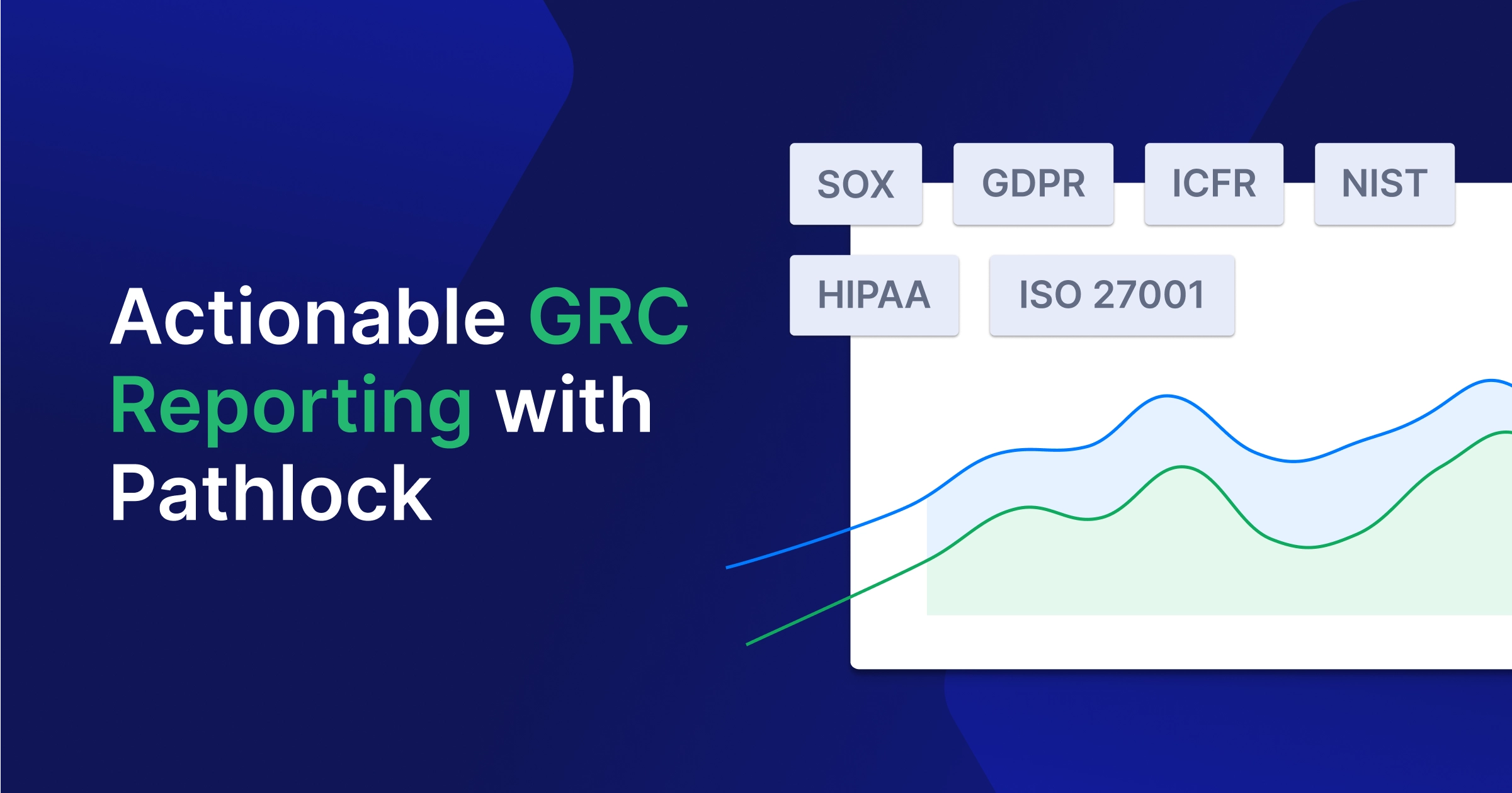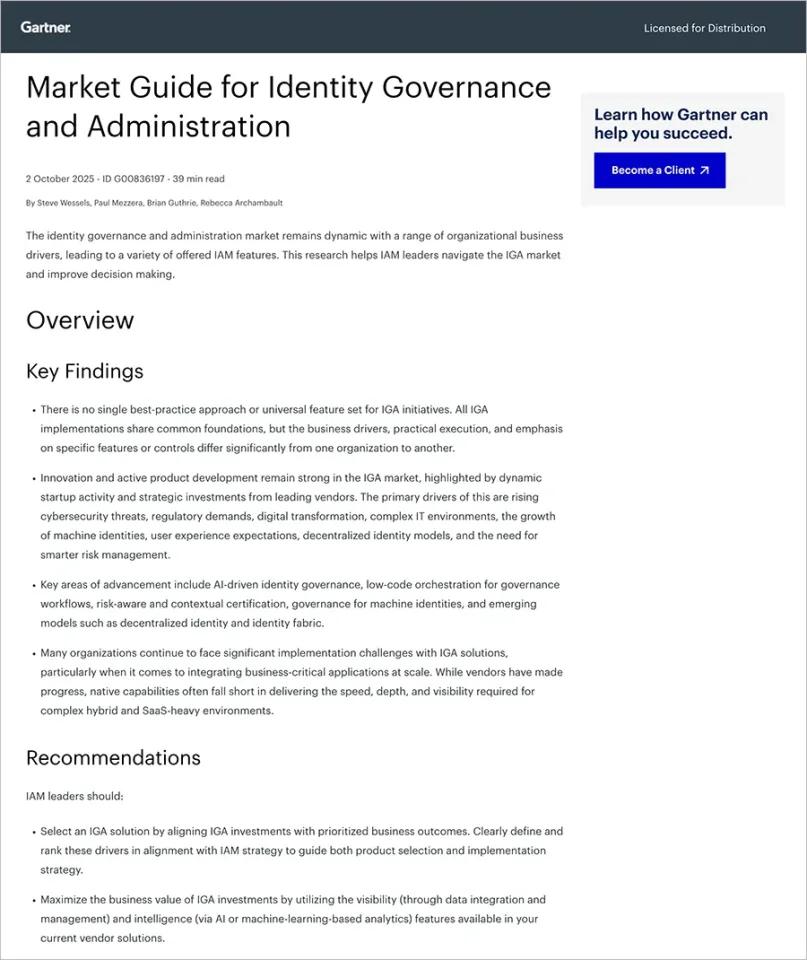Top 9 User Access Review Software List
List of Top nine user access review software list 2025 is as follows:
- Pathlock
- SailPoint IdentityIQ
- Microsoft Entra
- CyberArk Identity
- Ping Identity
- ManageEngine ADAudit Plus
- Lumos
- LogicManager
- SecurEnds
1. Pathlock Cloud

Pathlock is a Governance, Risk, and Compliance (GRC) platform that provides a comprehensive set of tools for fine-grained identity security and governance of business-critical applications, preventing data loss and compliance violations. It aims to lower compliance costs by reducing risk using user access reviews for identity security and ensure audit readiness particularly for enterprise applications like SAP ERP and Oracle enterprise solutions but also support combined user access reviews that include other enterprise applications like Microsoft Dynamics 365, Workday, Salesforce, Peoplesoft HCM, Exchange Online, and Microsoft Active Directory. It provides segregation of duties analysis, activity usage data, peer insights, and automated remediation.
Following are core features for Pathlock Cloud User Access Review:
User Access Review and Certifications
In demo below, you’ll see how Pathlock Cloud simplifies User Access Reviews (UAR), Segregation of Duties (SoD) campaigns, and role certifications, enabling you to streamline compliance and audit processes across critical applications.

Pathlock User Access Review and Certifications Demo
Learn how to:
- Launch and manage user access certification campaigns
- Track progress and risk scores in real time
- Perform reviews using Excel uploads for non-integrated apps
- Drill into user, role, and access details Handle delegations, reassignments, and audit logs
- Whether you’re managing SAP, Oracle, or other business systems, Pathlock Cloud helps you ensure proper access controls without waiting on integrations.
Access Risk Analysis
Pathlock utilizes out-of-the-box, customizable rulesets to detect role conflicts, manage segregation of duties (SoD) across various business applications, and prioritize high-risk users and roles.

Pathlock Cloud Access Risk Analysis Demo
See the demo below for Pathlock’s Cloud’s User Access Analysis, we explore how Pathlock helps you with:
- Creating customized dashboards to visualize risk effectively
- Utilizing out-of-the-box content for quick deployment and ROI
- Maintaining a centralized view of risks across applications
- Applying flexible risk mitigation methods tailored to your needs
- Generating a comprehensive audit reports with ease
Compliant Provisioning
Pathlock uses automated Joiner-Mover-Leaver (JML) processes for fine-grained user risk analysis before provisioning access. In the demo below, Learn how Pathlock’s Compliant Provisioning delivers secure, compliant access management by running every request through preventive SoD checks and layered risk analysis, catching and neutralizing risks before they become threats.

Pathlock Cloud Compliant Provisioning Demo
In this demo, you’ll see how Pathlock:
- Streamlines access requests with an intuitive self‑service portal
- Conducts proactive risk analysis before privileges are granted
- Enables flexible access changes with role recommendations
- Tracks approvals and requests in real time for total transparency
- Drives mitigation workflows for truly secure, compliant provisioning
Elevated Access Management
Pathlock tracks and monitors privileged user sessions, automating elevated management through an automated workflow.In the demo below, Learn how Pathlock Cloud streamlines Elevated Access Management through time‑bound roles, flexible workflows, and comprehensive audit visibility.

Pathlock Elevated Access Management Demo
In the demo, you’ll see how to:
- Request temporary elevated access
- Approve or deny access with full context and risk indicators
- Automatically revoke privileges as soon as the session ends
- Monitor every action via detailed audit logs and change histories
- Stay compliant with granular, session‑level activity tracking
Role Management
Pathlock provides tools for designing, updating, and maintaining roles, including a visual role builder and “what-if” analysis to ensure adherence to compliance requirements.
Access Request and Flexible Workflows
Pathlock offers a user-friendly, intuitive UI for access requests, along with multi-tiered, flexible workflows that enable approvers and compliance teams to automate reassignments and escalation processes.
2. SailPoint IdentityIQ
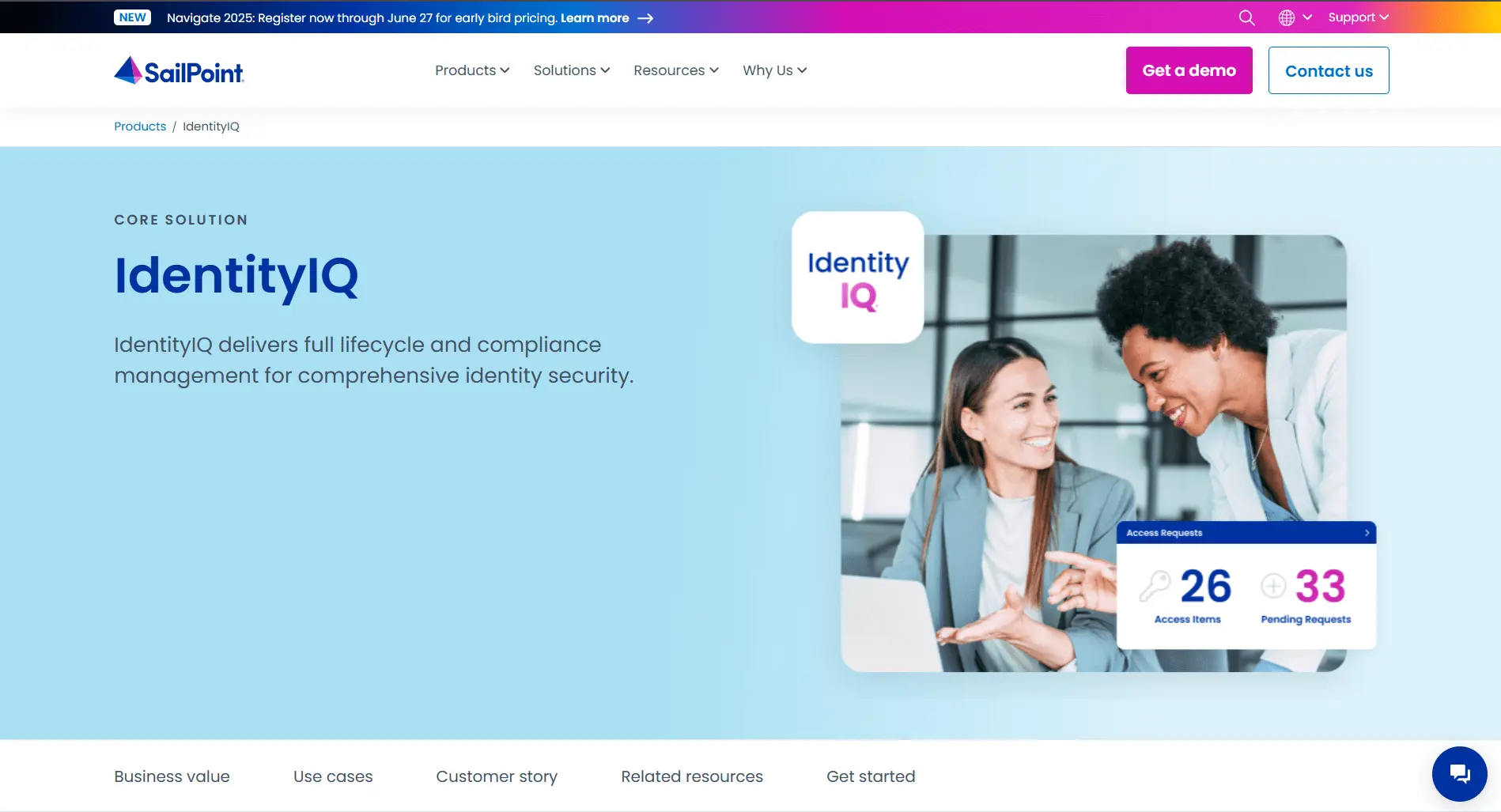
SailPoint IdentityIQ is an Identity Governance and Administration (IGA) solution that leverages AI and machine learning to automate user lifecycle, compliance, and access management. IdentityIQ also provides user access review tools and separation of duties features for managing and governing user access rights across complex and large enterprise environments. Recently, SailPoint shifted its focus to its cloud platform, Identity Security Cloud; however, IdentityIQ remains a solution for both on-premises and public cloud deployments.
Key Features
- Lifecycle Management: IdentityIQ automates the entire user lifecycle, including provisioning employees in systems, managing roles, and de-provisioning when employees leave the company.
- Compliance Management: IdentityIQ enables organizations to certify access, enforce controls to ensure organization-wide compliance, and audit using its centralized User Access Request (UAR) feature, which leverages AI and machine learning analysis.
- Access Modeling: IdentityIQ enables organizations to define and manage access using a role-based access control model to streamline access provisioning and adhere to the principle of least privilege.
- Extension modules: SailPoint offers several modules that provide extended features.
- Password Manager: Provides centralized and automated password management.
- File Access Manager: Provides extended governance for auditing and controlling sensitive file access, supports unstructured data.
- Access Risk Management: Provides enhanced risk analysis, including enforced segregation of duties to prevent unauthorized access.
- SaaS Management: Provides enhanced control and visibility for access to SaaS applications.
3. Microsoft Entra

Microsoft Entra is a set of identity and access management (IAM) solutions. At its core, Microsoft Entra ID is a cloud-based solution, previously known as Azure Active Directory. It has been expanded to include identity governance, protection, and permission management, among other features. It serves as a centralized hub for secure access to Microsoft services, applications, and third-party environments, supporting zero-trust principles.
Key Features
- Permissions Management: As a Cloud Infrastructure Entitlement Management Solution, Microsoft Entra Permissions Management provides comprehensive control and visibility over user identities and workloads, as well as any resource, across multi-cloud environments such as Azure, GCP, or AWS.
- Workload ID Management: Microsoft Entra secures and manages non-human identities, such as applications and services, that access cloud resources with the principle of least privilege.
- Domain Services: Microsoft Entra extends the capabilities of on-premises Active Directory to Azure with managed domain services, including domain join, group policy, and LDAP, without requiring the deployment of domain controllers.
- Identity Governance: Microsoft Entra provides UAR as a key component for identity governance to their P1 and P2 subscribed customers, which includes:
- Access Reviews: Provides automated and streamlined user, group, application, and role access review.
- Entitlement Management: Provides managed access to resources by defining the access packages and automates the user, business partners, and vendor lifecycle.
- Privileged Identity Management: Helps organizations to manage, control, and monitor access to essential resources in Azure, Azure AD, and other Microsoft online services by providing just enough and just-in-time access.
- Identity Protection: Provides features for preventing, detecting, and remedying vulnerabilities affecting identities and policies.
4. CyberArk Identity
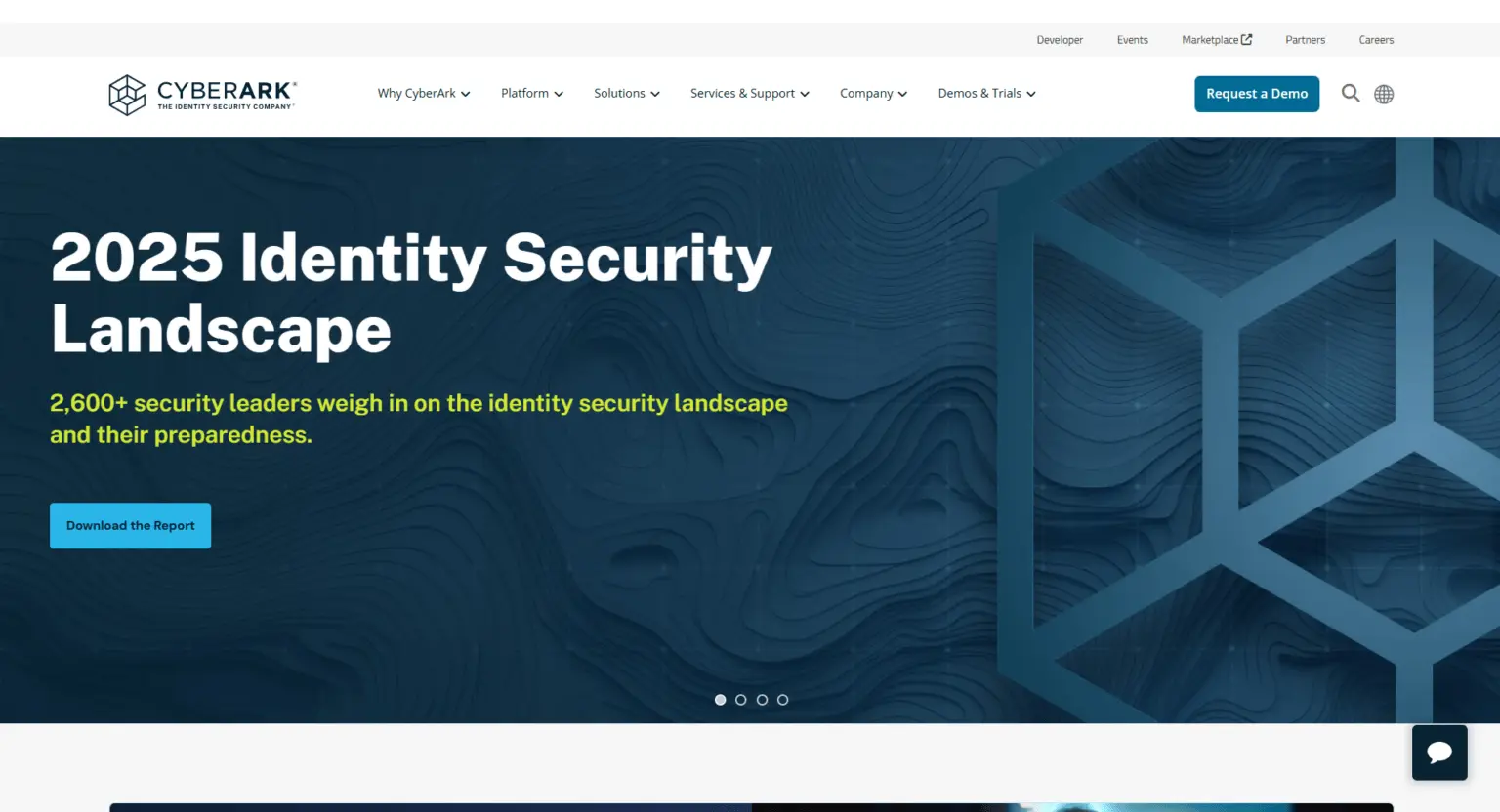
CyberArk is a broader identity and access management platform. It provides CyberArk Identity as its Identity as a Service (IDaaS) component, focusing on securing all identities, whether privileged or non-privileged, including humans, systems, and applications. It also provides threat detection, prevention, and response functionalities across an organization’s identity lifecycle. It offers privileged access management (PAM), multi-factor authentication (MFA), and single sign-on (SSO) as a combined solution on a single platform.
Key Features
- Privileged Access Management (PAM): CyberArk is recognized for its expertise in privileged access management. It provides an integrated, unified approach for managing, securing, and monitoring privileged and regular user access by enforcing the principle of least privilege.
- Just-in-Time Access: Provides time-limited elevation of privileges which reduces the risk of exposure to high-level resources.
- Endpoint Security: Defends against credentials theft, lateral movement, and ransomware attacks. This removes the local admin rights and enforces the least privilege model on Windows, Linux, and macOS endpoints.
- Identity Connector: Provides connectors to integrate with on-premises directories like Active Directory for synchronized user authentication and management.
- User and Admin Portal Security: Provides secure SSO and MFA integrated portals for users to access applications and administrators to manage policies, identities, and reports.
- Role-Based Access Control: Provides RBAC models for users to gain authorized access to network infrastructure and applications.
5. Ping Identity

Ping Identity is a cloud-based identity security and access management platform designed to provide secure digital experiences to meet demanding identity challenges for complex enterprise environments. It focuses on identity authentication, authorization, and verification, and offers strong features in risk-based access management. Ping Identity provides secure access to applications and APIs using single sign-on and multifactor authentication features, as well as its PingID mobile app for Android and iOS devices.
Key Features
- PingOne Credentials: With its PingOne Credentials component, PingOne provides secure digital credentials storage, management, and passwordless authentication options. Identification records, authorization, and entitlement represent the owner’s verifiable credentials, enabling relying parties and service providers to verify data integrity, accuracy, and authenticity in real-time. It integrates completely with the Ping Identity platform and other open identity providers.
- Ping Identity Verification: The PingOne Verify component of the PingOne cloud platform integrates identity verification directly into applications. It enables customers to verify their identity by capturing facial images, scanning government-issued identification documents, and confirming that they meet stringent security standards by Know Your Customer (KYC) requirements. It utilizes a decentralized identity verification process that involves the issuer, verifier, and either the user or a group of users.
- Selfie Matching: A core component of PingOne Verify, Selfie Matching utilizes advanced facial recognition technology for live selfie images (Biometric comparison) to match the government-issued ID, ensuring real-time detection and preventing spoofing attempts.
- PingOne Protect: This is a detection and prevention solution designed to identify and mitigate risks and fraud. It assesses multiple attack factors, assigns risk scores, and triggers mitigation actions like CAPTCHA, selfie verification, password resets, or push notifications to allow verified users to authenticate and block attacks. PingOne Protect uses User and Entity Behavior Analytics (UEBA) to detect real-time anomalies.
6. ManageEngine ADAudit Plus
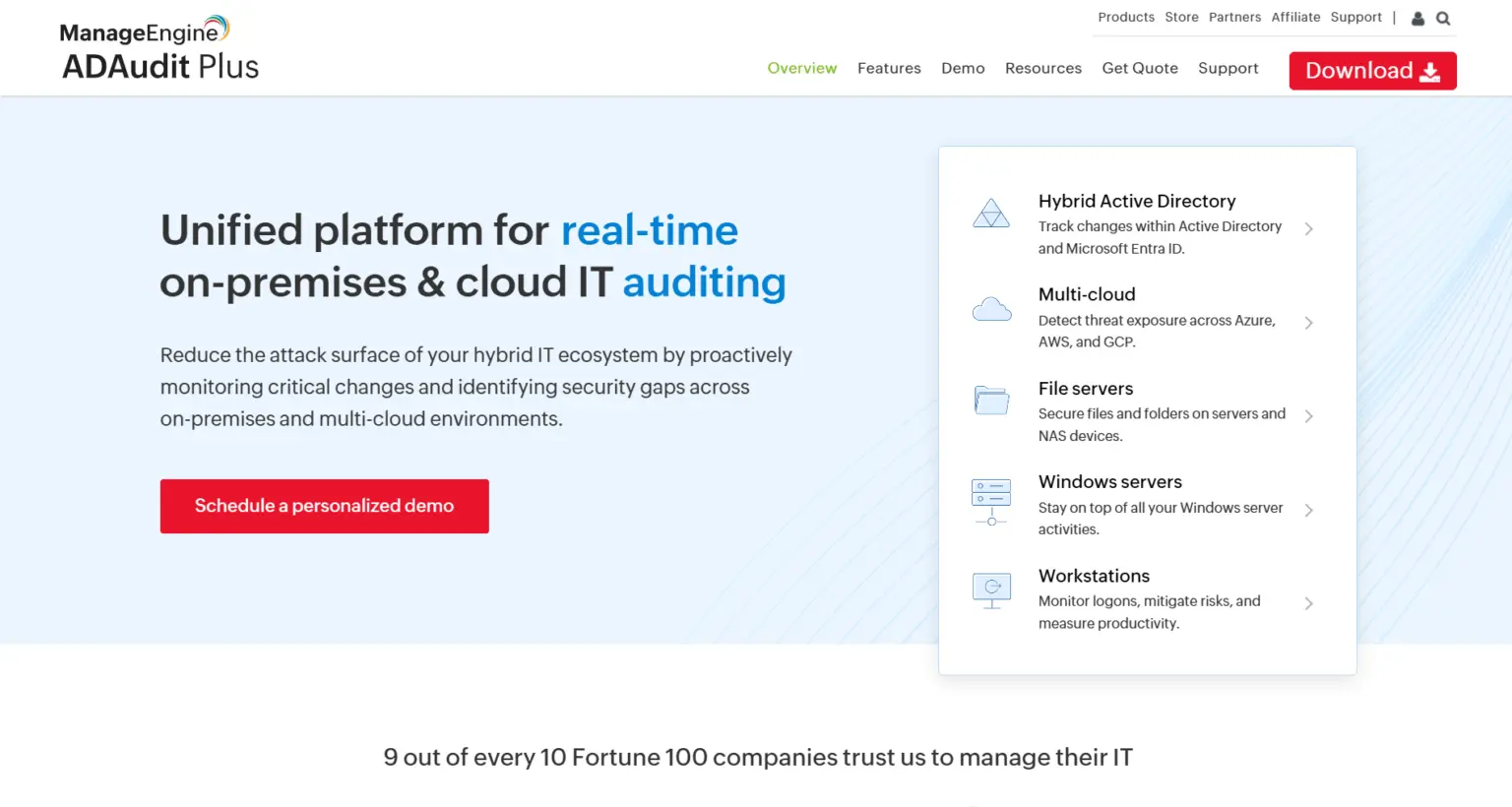
ManageEngine ADAudit Plus is a UBA-driven web-based auditing and compliance solution designed especially for hybrid IT infrastructures. It provides real-time auditing, monitoring, analysis, and reporting functionalities for changes on users, groups, computers, GPOs, organizational units, and threat detection in Active Directory, Azure AD, Windows servers, workstations, and file servers, making it a comprehensive UAR solution.
Key Features
- Active Directory Auditing: This service provides thorough, real-time auditing of all changes made to Active Directory users, groups, OUs, GPOs, and schema objects, based on the “who, what, when, and where” model. It also provides alerts and reports on critical AD activities such as failed or successful login attempts.
- Multi-platform Support: Provides extended auditing functionality for Azure AD, Windows file servers, Windows servers, NAS devices, and workstations. It aims to provide visibility across multi-cloud infrastructures, extending beyond on-premises environments, such as Active Directory. It supports several file server platforms like EMC, NetApp, Synology, Huawei, and Hitachi.
- Privileged User Monitoring: Provides ongoing auditing functionalities for privileged user activity to ensure accountability and compliance. It tracks administrative user actions and access to critical data to detect privilege escalation or threats.
- File Change Monitoring: This feature provides real-time alerts and visibility on all changes, including creations, deletions, and failed access attempts, to critical folders and files on Windows and NAS file servers. It audits new and old NTFS permissions on file shares and folders to detect suspicious modifications.
- Threat Detection and Response: This feature incorporates user behavior analytics and provides tracking functionalities to detect behavioral anomalies and AD attacks, such as Kerberoasting or DCSync. Then, automated response actions, such as deactivating an account or service or shutting down a device, are triggered.
- Compliance Reporting: Provides more than 250 audit-ready built-in reports for different compliance regulation bodies, such as SOX, HIPAA, CIS, PCI DSS, GDPR, FISMA, GLBA, and ISO 27001.
7. Lumos

Lumos is an identity governance and administration (IGA) platform designed to simplify and automate access management, policy management, user lifecycle management, and access reviews, particularly for cloud environments and SaaS applications. It focuses on providing fine-grained visibility and enabling delegated reviews without relying on traditional IGA complexities, offering a user-friendly interface. Lumos streamlines software management and access for IT tasks, including helpdesk operations, access requests, and provisioning.
Key Features
- Identity Governance: This provides control and visibility into who has access to what resources across SaaS, Cloud, and on-prem hybrid environments. It also supports integration with various identity providers, such as HRIS, ITSM, and other applications.
- Automated Access Revocation: Provides automated and enforceable processes for access review and decisions. If an access request is rejected after a review, it can automatically trigger revocation actions in the target system.
- Centralized Access Data Repository: It automatically gathers access data and then aggregates and consolidates it into a centralized access repository, eliminating the need for manual data collection from different systems.
- Streamlined Delegated Reviews: Lumos simplifies the UAR process by presenting data reports to reviewers such as application owners or direct managers, with AI-driven flagged changes, risks, SoD violations, and over-privileged access. It also provides remediation recommendations to speed up the review process. Lumos provides automatic workflows for reviewing and assigning tasks to the right owners, including application and data owners, line managers, security teams, and compliance teams.
- Automated Provisioning and Deprovisioning: Lumos also provides automated provisioning and deprovisioning of user accounts and access rights, including the approval-based workflows.
- Compliance Support: Provides audit-ready reports for several compliance frameworks, such as SOX, ISO 27001, or SOC 2.
8. LogicManager

LogicManager is an Enterprise Risk Management (ERM) solution that acts as a central hub by integrating several Governance, Risk, and Compliance (GRC) processes, including access reviews, into a framework. It is a risk-based approach to managing organizational processes that helps discover hidden risks and improve decision-making. LogicManager supports a wide range of compliance frameworks and employs the principle of least privilege for user access reviews to identify security vulnerabilities.
Key Features of LogicManager
- Enhanced Risk Management Framework: This framework provides a centralized platform for identifying, assessing, mitigating, and monitoring risks across various domains, including Operational, Financial, and IT security.
- Advanced Integration Hub: Integrates with various third-party applications, such as Office 365 and Workday, to pull relevant sensitive information for user access reviews and risk assessments.
- Automated Event Management System: Provides an automated, structured framework for early detection and response to incidents and risks, including monitoring access-related events that deviate from standard patterns.
- Compliance Management: Provides automated compliance workflows and reports to demonstrate adherence, maps controls and risks to relevant regulatory bodies and policies. Its user access review program is a set of critical controls for many regulations.
- Workflow features: LogicManager provides automated workflows to ensure that the right people are engaged in review and mitigation steps, and supports automated tasks, reminders, and alerts within risk and compliance processes.
- Role-Based Access Control: LogicManager provides built-in RBAC functionality to ensure data security and confidentiality by assigning appropriate access rights to manage risks and compliance.
- Reporting and Dashboards: Provides customizable reports and dashboards with risk heat maps and control matrices for presenting risk and compliance posture to the board and senior management.
9. SecurEnds

SecureEnds is a cloud-based identity governance and administration platform that provides unified identity governance. It simplifies and automates the user access reviews process with delta campaigns and identity management processes, aiming to reduce manual efforts, ensure strong security, and improve compliance via its identity-centric approach. SecureEnds key features include automated Credential and Entitlement Management (CEM), which helps organizations effectively enforce, assess, and revoke access rights. It integrates with major identity systems, such as Active Directory and Office 365, as well as other cloud services, for central management.
Key Features of SecurEnds
- Unified Identity Repository with Advanced Matching: SecureEnds collects identity data from different on-premises and cloud applications and creates a centralized repository. Then, it utilizes advanced matching algorithms to accurately link accounts of other natures to a single user, even without a single source of truth.
- Identity-Centric Mind Map: It utilizes the “who has access to what” model, providing a straightforward visual representation of identities and their access rights to facilitate understanding, which enables the quick identification of overprivileged accounts and access vulnerabilities.
- Flexible Review Management System: It offers customizable and flexible certification campaigns and workflows, supporting various review types, including user-centric, role-based, entitlement-based, and resource-based. It provides fine-grained scoping and flexibility for reviewer assignments, such as application owners, managers, or multi-level approvals.
- Audit Trail with Integrated Remediation: It provides a comprehensive audit trail and reports for all review activities, decisions, and mitigation actions, ensuring complete audit readiness and accountability. It also provides integrated remediation workflows and automated revocation of access rights if reviewed decisions are denied.
- Extensive Connectivity: SecureEnds offers comprehensive integration with numerous renowned HR systems, Active Directory, ERP systems, and Identity and Access Management (IAM) tools.
- Compliance Reporting: Provides detailed reports and a customizable dashboard to support compliance regulations such as SOX, HIPAA, PCI DSS, and GDPR.
What are Functionalities of User Access Review Software?
User access review software automates the review and management of user access rights by providing a centralized platform for discovering, analyzing, and remediating access-related risks and compliance issues.
UAR software provides the functionalities as follows:
User Access Discovery and Inventory
This foundational feature conducts access privilege discovery by collecting data from various sources, including on-premises and cloud-based systems, applications, databases, and directories such as Active Directory, LDAP, SQL Server, Azure AD, file shares, and SharePoint.
Some software can also collect unstructured or raw data. The software aggregates data to inventory identities linked across systems rapidly. It maps them to their granular permissions, roles, or group memberships, which provide a systematic view of each user’s entitlements. This process can be performed using either agent-based or agentless discovery methods.
Role-Based Access Control (RBAC)
RBAC is a simplified access management security model that assigns permissions to users according to their functions and responsibilities within an organization. UAR software provides RBAC features or integrates with existing ones. UAR software enables organizations to design and assign logical roles, such as IT Administrator, HR Manager, or Sales Representative, and bundle them with specific permissions grantedaccording to their responsibilities. This allows for assigning the minimum necessary access to perform their duties, adhering to the principle of least privilege (PoLP).
Segregation of Duties (SoD) Compliance
Segregation of duties is a control system that ensures that no single person has complete authority over an entire critical business process, designed to prevent errors, fraud, or abuse of access or permissions.
Based on predefined SoD policies, the UAR software can analyze access entitlements for potential conflicts of interest, such as a single user creating a vendor and approving payments for that vendor.
The software helps redesign roles by assigning them to users to avoid SoD conflicts and allows adjustments where needed if the user role has changed. Some UAR solutions provide real-time monitoring and automated control mechanisms that extend beyond simply identifying conflicts to detect and prevent SoD violations from occurring in the first place. These solutions include automated alerts and detailed reports for administrators in the event of a detected violation.
Access Request and Approval Workflows
UAR solutions provide comprehensive access request portals and approval workflows. Users can use the portals or interface to request new access to a resource, temporary access, or changes to existing access rights, typically using predefined forms with a clear description of the access.
Approval workflows are complex, multi-tier review processes. Depending on the sensitivity of the access request, it is routed to the application owners, data owners, direct managers, or security teams. They can then decide to approve or deny those requests by commenting on justifications for their decision. UAR solutions support manual and automated approvals for high-risk and low-risk requests.
User Provisioning and Deprovisioning
UAR solutions provide automated provisioning and de-provisioning of user accounts and access rights across different systems and applications. When a new employee joins the organization, their account is automaticallycreated. Upon leaving the organization, it is either deactivated or deleted. Similarly, their access rights are assigned or modified according to their roles and responsibilities.
UAR solutions can seamlessly integrate with most Human Resource systems, such as Workday or SAP SuccessFactors, leveraging and monitoring their data for hiring, department changes, access rights, or termination. This allows them to trigger automated provisioning and de-provisioning actions for accurate access rights management.
Entitlement Reviews and Certification
As the core of the UAR process, entitlement reviews and certifications for user access are periodically performed by collecting the most recent user entitlement state from connected systems and applications, which are compiled into reports. Designated reviewers, such as application owners, data owners, or direct managers, can then use these reports to certify whether access is appropriate. If not, remediation actions should be taken by revoking unnecessary access rights. Some UAR solutions support manual and automated revocation of access rights based on pre-defined rules and filters, and generate reports on remediation actions taken after review.
Security and Compliance
The primary goal of UAR solutions is to provide a review of user access rights, which helps organizations demonstrate and prove compliance with various regulatory requirements, such as PCI DSS, GDPR, HIPAA, or SOX, by establishing controls to manage effective user access.
Most UAR software provides secure access to itself by supporting single sign-on or multifactor authentication. Data collected from integrated systems is encrypted in transit and at rest. Some advanced UAR solutions may provide security risk information and event management (SIEM) tools to contribute to a comprehensive security posture, enhancing threat detection and vulnerability scanning capabilities. These tools maintain audit logs of all reviews, changes, access requests, and approvals, providing a detailed history for analysis, internal audits, or external compliance reporting. Customizable dashboards and reports that offer clear visibility into reviews, potential risks, and compliance are available.
How to Choose Right User Access Review Software?
When choosing the right User Access Review platform, specific aspects must be considered because the decision impacts an organization’s security posture, operational efficiency, and compliance efforts. There is no one-size-fits-all solution; thorough evaluation is essential.
Defining Requirements
Clearly defining the specific requirements and objectives of your organization is a foundational step before even considering a vendor. This ensures you select the solution that aligns with your unique goals and environment. Factors to consider are as follows:
- Scalability: Ensure your chosen solution supports your organization’s current size and future growth, including the addition of more users, applications, and systems.
- Integration: The solution integrates with your identity providers, such as Active Directory, Azure AD, or cloud platforms like AWS, Azure, and GCP, as well as HR systems and business applications like SAP and Salesforce, providing API support for custom applications.
- Automation: This solution provides automated access reviews, access requests, SoD evaluations, workflows, and provisioning/de-provisioning functionalities, along with remediation capabilities.
- Reporting and analytics: Ensure the vendor offers a customizable dashboard, comprehensive reporting, audit trails for key compliance regulations, and advanced analysis functionalities.
- User Interface: The vendor provides a user-friendly interface for users, reviewers, and managers, reducing the need for additional training.
Evaluating Software Options
Once you have defined the requirements, start evaluating vendors using those criteria.
- Vendor reputation: Search for vendors renowned in the identity governance and administration (IGA) or User Access Reviews fields by looking at recommendations from industry analysts such as Forrester and Gartner, and customer reviews and testimonials.
- Security features: Look for data protection features, such as encryption in transit or at rest, as well as the authentication methods of the UAR tool that support SSO or MFA for administration and user portals. Additionally, consider threat detection functionalities.
- Compliance standards: Look for specific regulatory framework support, such as SOX, GDPR, HIPAA, ISO 27001, PCI DSS, and audit-ready report features.
- Pricing models: Evaluate their pricing models, such as Per-User/Per-Identity, Per-Application/Per-Connector, tiered pricing, on-premises vs. SaaS, or Total Cost of Ownership (TCO), and perform a thorough assessment of which one is most suitable for your organization’s environment.
Requesting Demos
Once you have shortlisted the vendors against the above criteria, request a detailed demo, not just a canned or in-browser one. Ask the vendor to demonstrate the features and how they will address your specific use cases and requirements. Prepare a list of questions you need answers to in the demo. Engaging your IT, security, business users, and compliance teams in these demos is essential.
Customization and Vendor Support
Verify that the workflows, policies, review templates, notifications, reports, and dashboards are flexible and customizable to accommodate your organization’s unique processes. The vendor provides APIs and SDKs for custom extensions and integrations. What support does the vendor offer, such as 24/7 or business hours, email, phone, online, etc.? What is the response time? Is extensive documentation, a knowledge base, onboarding assistance, training, and user manuals available?
Implementation Steps
Once you have chosen a successful UAR solution, plan carefully for implementation execution.
Setup and configuration
Install your UAR software, connect and configure your UAR solution to your identity sources and target systems for discovery by deploying connectors or API access. Ensure your data is accessible from the sources and create a unified view. Configure segregation of duties rules, review parameters such as review frequency and reviewer assignments, and configure access policies. Design review and access requests workflows to align with your organization’s approval procedures.
User training
Conduct hands-on training sessions with the vendor and involve the IT security team and UAR administrators for configuration, management, and troubleshooting. Involve in-house application owners and managers (reviewers) and train them in the review process and to understand workflow.
Pilot testing
Start pilot testing with a small group of users, a specific department, or a critical application to evaluate the solution in your environment. Collect feedback from pilot users and resolve any integration-related issues or pain points before rolling out organization-wide. Use the pilot phase to fine-tune the configurations, workflows, notifications and training.
Post-Implementation Monitoring
Implementation is just the beginning. Ongoing monitoring and optimization are essential for maximizing the value of UAR solutions. These include monitoring the health and performance of the UAR solution, ensuring integrations are working effectively, and ensuring data is accessible.
Track access review campaigns’ completion rates, progress, access anomalies, and exceptions, and ensure successful access revocation and modification actions. Compliance and access review reports are scheduled promptly and adhere to regulatory requirements. Maintain audit readiness, review documentation and trails, and regularly update access review policies and SoD rules. Gathering regular feedback for the UAR solution is crucial for identifying areas for improvement and optimization.
Why Choose Pathlock’s Risk-Aware User Access Reviews?
Pathlock offers a “risk-aware” approach to benefit complex organizations with critical applications, such as ERP systems, distinguishing Pathlock in the User Access Review process. It not only verifies access rights but also provides context and insight, which helps reviewers make risk-based decisions during the UAR process and determine whether the user’s access rights pose a potential risk to the organization.
By combining risk intelligence, compliance readiness, and automation on a single platform, Pathlock provides a next-generation user access review experience. It provides the following key features:
Modern user experience
Pathlock’s UAR user interface is modern and easy to use, designed to cater to all stakeholders in the UAR processes. It provides real-time visibility into UAR progress with intuitive dashboards and actionable reports. It provides a simple interface for access reviewers and approvers, offering clear context, relevant risk indicators, and typically one-click certification.
Risk insights and context
Pathlock provides actionable risk intelligence by automatically detecting segregation of duties conflicts using your rule set. It identifies and prioritizes high-risk roles and users with access to critical, sensitive data based on contextual HR and risk data, focusing attention where it matters most. It uses “Did do” access idea instead of “Could do”, allowing reviewers to make decisions based on evidence, helping them enforce the least privilege principle.
Configurable workflows
Pathlock provides highly configurable and flexible UAR workflows with automated routing, escalations and multi-step approval, to be assigned to reviewers based on criteria, such as risk level, responsibility, application ownership, user type, department, system or custom business logic to make sure that the right person is reviewing the proper access rights. Pathlock’s UAR schedules regular and automated UAR campaigns, reducing manual effort and ensuring compliance.
Streamlined certifications and revocations.
Pathlock’s streamlined certification and revocation features make the UAR process more efficient by integrating risk indicators. They facilitate accurate and rapid certification or denial of access, as well as automatic revocation of access, by integrating with target systems.
Comprehensive audit trail
It maintains a complete audit trail, necessary for compliance, by logging all review activities, decisions, and modifications. It generates detailed reports to satisfy internal or external auditors for compliance frameworks, such as SOX, HIPAA, GDPR, ISO 27001, and PCI DSS, providing clear proof of user access management.
Key Advantages in Access Management
Pathlock offers advantages in overall access management, as follows:
- Pathlock focuses on business-critical applications, including ERP systems such as SAP, Workday, Oracle, Salesforce, and many HR/CRM-based applications, by providing deep governance features for complex enterprises, with the highest risk associated with financial and operational activities.
- Pathlock consolidates several access governance functions into a single platform. These include compliant provisioning, privileged access management, and role management.
- Pathlock provides preventive controls, such as segregation of duties analysis before provisioning access, and detective controls, such as ongoing monitoring of transactions to minimize risk, along with remediation suggestions.
- Offers real-time visibility and monitoring of user activities and violations, leading to quick detection and risk response.
- Pathlock automates many manual processes to help organizations reduce time, cost, and effort in access management, audit readiness, and compliance adherence.
- Pathlock provides connectors for integrating cloud-based and on-premises IT environments.
Conclusion
The requirements of the compliance regulatory authority and the evolving cybersecurity landscape include a proactive approach to user access management. Organizations’ use of on-premises, cloud, and SaaS applications makes it more challenging to evaluate who has the proper access to the correct data. This is where user access reviews become critical, not just best practices or a nice-to-have.
Comprehensive UARs are the cornerstone of identity governance. Organizations can reduce the risk of unauthorized access by regularly evaluating and verifying user permissions, adhering to the principle of least privilege, minimizing the attack surface, and limiting security breaches, internal threats, data leaks, and unauthorized activities. User access reviews are also essential for demonstrating accountability, avoiding penalties, reputational damage, and legal repercussions by following the strict rules and regulations mandated by regulatory compliance.
Manual access reviews can be time-consuming, prone to human error, and mostly lack context. Automated and integrated UAR tools, such as Pathlock, can collect and aggregate vast amounts of data in a shorter timeframe and resolve identity-related access conflicts quickly by utilizing access certifications and remediations. Automating data collection, workflow management, reviewer assignment, comprehensive dashboards, audit trails, and reporting can reduce manual effort, time, and cost of conducting reviews. Automated UAR solutions are designed to scale as organizations grow, accommodating additional users, applications, and compliance requirements.
Effective user access management is no longer optional in today’s dynamic threat landscape. Investing in a UAR solution is an investment in your organization’s security. Therefore, we strongly encourage you to request demos from different UAR software vendors, ask them to guide you through their solution, evaluate how their features address your unique use cases, and integrate with your in-house applications and infrastructure. Assess your organization’s current requirements, future growth, and alignment with your industry compliance requirements. Finally, conduct detailed research for renowned UAR solutions, their reputation, and security posture based on industry analysts such as Gartner, customer testimonials, pricing models, customer support types, training material, and long-term scalability.

